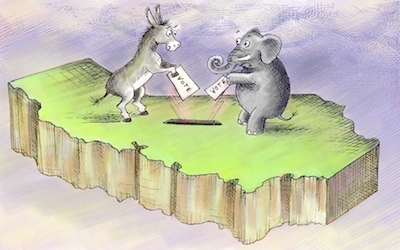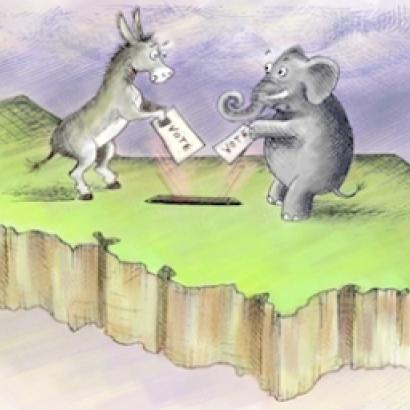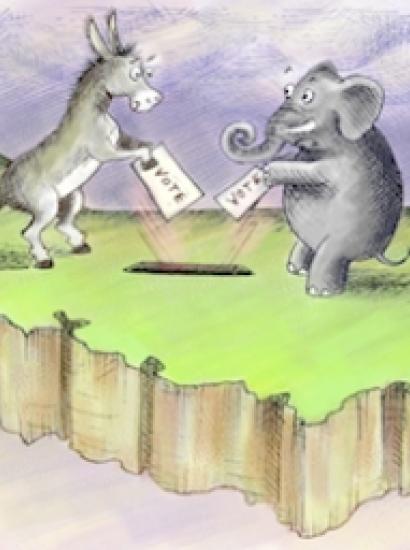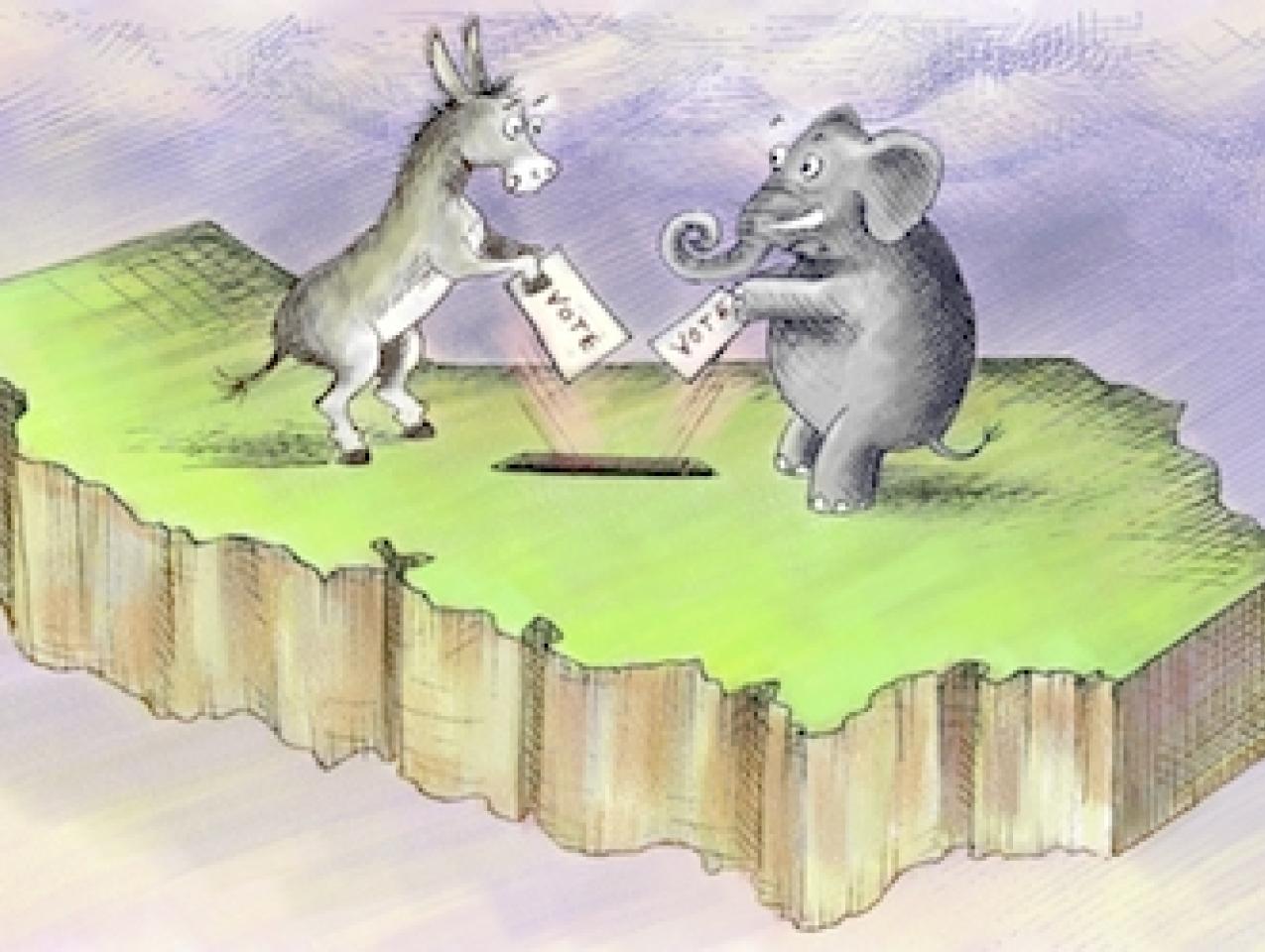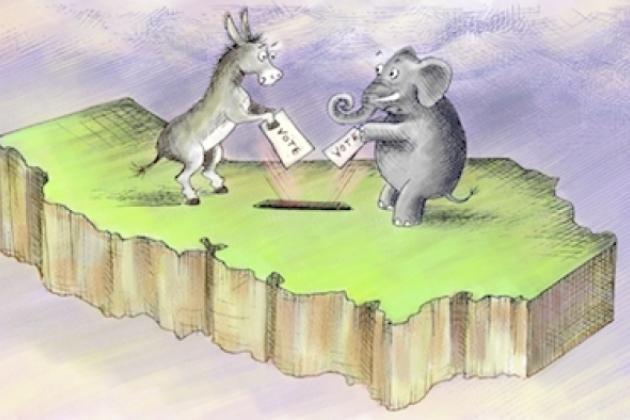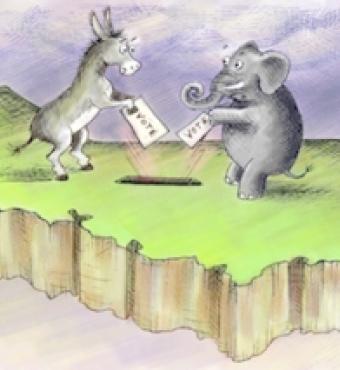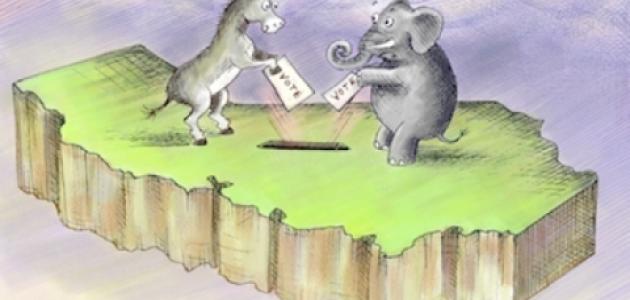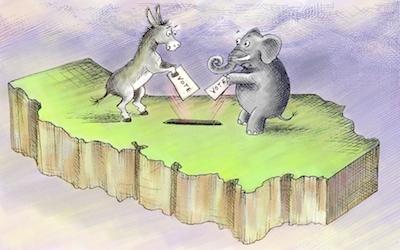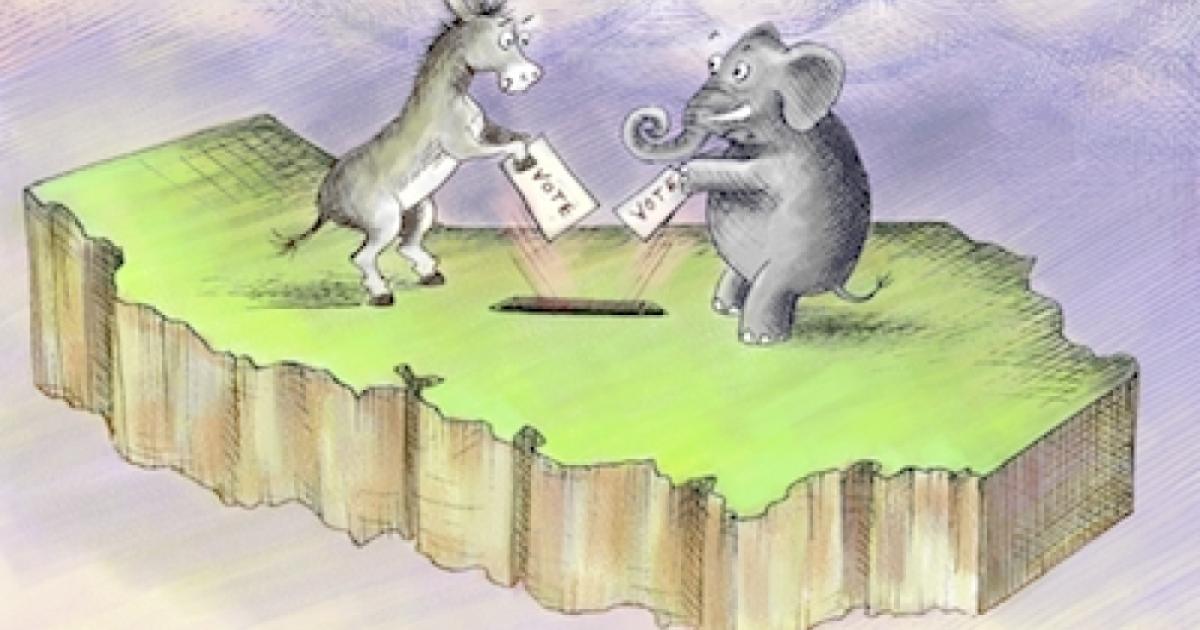- Politics, Institutions, and Public Opinion
- Campaigns & Elections
On June 3rd, Californians went to the polls to vote in the 2014 primary election. While it yielded some surprising results (like Republican David Evans’ strong State Controller results), the evening was relatively a dull affair.
Nonetheless, some of the key primary numbers could provide clues about what could happen on November 4th.
25.2% - Turnout of Registered Voters: Turnout was abysmal; no way around it. Three-quarters of registered Californian chose not to vote in any of the statewide, legislative, or Congressional races. And with 73% of eligible Californians registered to vote, turnout among eligible voters was even worse, 18%. Of course, the results varied widely by county, office, and district. For instance, statewide office turnout ranged from 24.4% for the Governor’s race to 21.4% for the Superintendent of Public Instruction contest, while Congressional election turnout totaled 23.4% and State Senate turnout was only 21.2%. For the counties, total turnout ranged from a high of 70% for Alpine County (where everyone votes by mail and only has 876 registered voters) to 17% in Los Angeles County. Needless to say, if California politics is to become less dysfunction, civic engagement needs to increase.
November Lesson: It is clear that there is little about the 2014 election that is inspiring voters. And if voters are not interested now, it could mean they won’t be in November. Since 1946 (the first mid-term election following the end of WWII), the average increase in participation in a mid-term election from the primary to the general election has been 16 points. If we look at mid-term elections since 1982, the average increase is 20 points. Either way, based on these historical averages and the 2014 primary turnout, November’s general election turnout could very well be in the low- to mid-40’s (representing a historic low by about 10 points).
53.3% - Average Total Democratic Share of Primary Vote: Primary electorates tend to be a bit more Republican-leaning than the general election, but despite that and the fact that this is a mid-term election year, the average total Democratic share of the vote was a solid majority. Of course, there was variation. The races with the top total Democratic shares were the Lt. Governor’s race at 55.4%, the gubernatorial contest at 55.2%, the State Treasurer race at 55.0%, and Congressional Democrats at 54.9%. The lowest performing were the Secretary of State contest at 51.7%, the State Senate Democrats at 51.6%, and the State Controller race at 48.4%.
November Lesson: Unexpectedly, Democrats are in a very strong position to maintain their political grip on California. However, the races where the Democrats performed the worse are those contests where the Republicans can be competitive. The even-numbered State Senate districts (those up for election this year) are the more Republican-leaning group, which will help Republicans as they try to prevent a sustained Senate Democratic super-majority. And if Republicans are going to pick up any statewide office, it will be the open State Controller and Secretary of State positions where Republicans have strong candidates in Fresno Mayor Ashley Swearengin and civic engagement expert Pete Peterson.
58.3% - Average Incumbent Share of Primary Vote: For all of the anti-Sacramento and anti-Washington, D.C. fever in today’s politics, incumbents serving in both capitals don’t have much to fear. Indeed, in all but four instances in the June primary, the incumbent running for re-election was the top vote-getter. Across all races featuring an incumbent, he or she won, on average, almost six-out-of-ten votes. The legislative incumbents fared the best with Senate incumbents winning 75% of the vote, Assembly incumbents winning 72% of the vote, and Congressional incumbents winning 63%. Among the statewide incumbents, Jerry Brown did the best with 54.3%. The outlier is Superintendent of Public Instruction, Tom Torlakson, who only managed to win 47% of the primary vote in this non-partisan race.
November Lesson: The top-two system was supposed to make elections more competitive, but the little amount of evidence suggests it isn’t shaking things up too much. A look at the 2012 results suggests incumbents are not as safe as before, but they are still very much in driver’s seat for the general election. A quick look at the races suggest that five to seven Assembly incumbents may be in danger, at most two State Senators could face competitive races, and around five to ten Congressional incumbents could have tight elections. And on Election Day, most of these members will survive. Of the statewide incumbents, only Tom Torlakson appears to be in serious trouble (especially more so following the Vergara v. California decision).
With just 11% of likely voters saying they are very closely following news about the 2014 gubernatorial race compared to 22% at this point in the 2010 election cycle, one thing is clear, Californians don’t see this year’s elections as interesting or compelling. Turnout will be low; Democrats will continue to do well; and incumbents, on the whole, don’t have much to worry about.
 Carson Bruno on Twitter: @CarsonJFBruno
Carson Bruno on Twitter: @CarsonJFBruno






